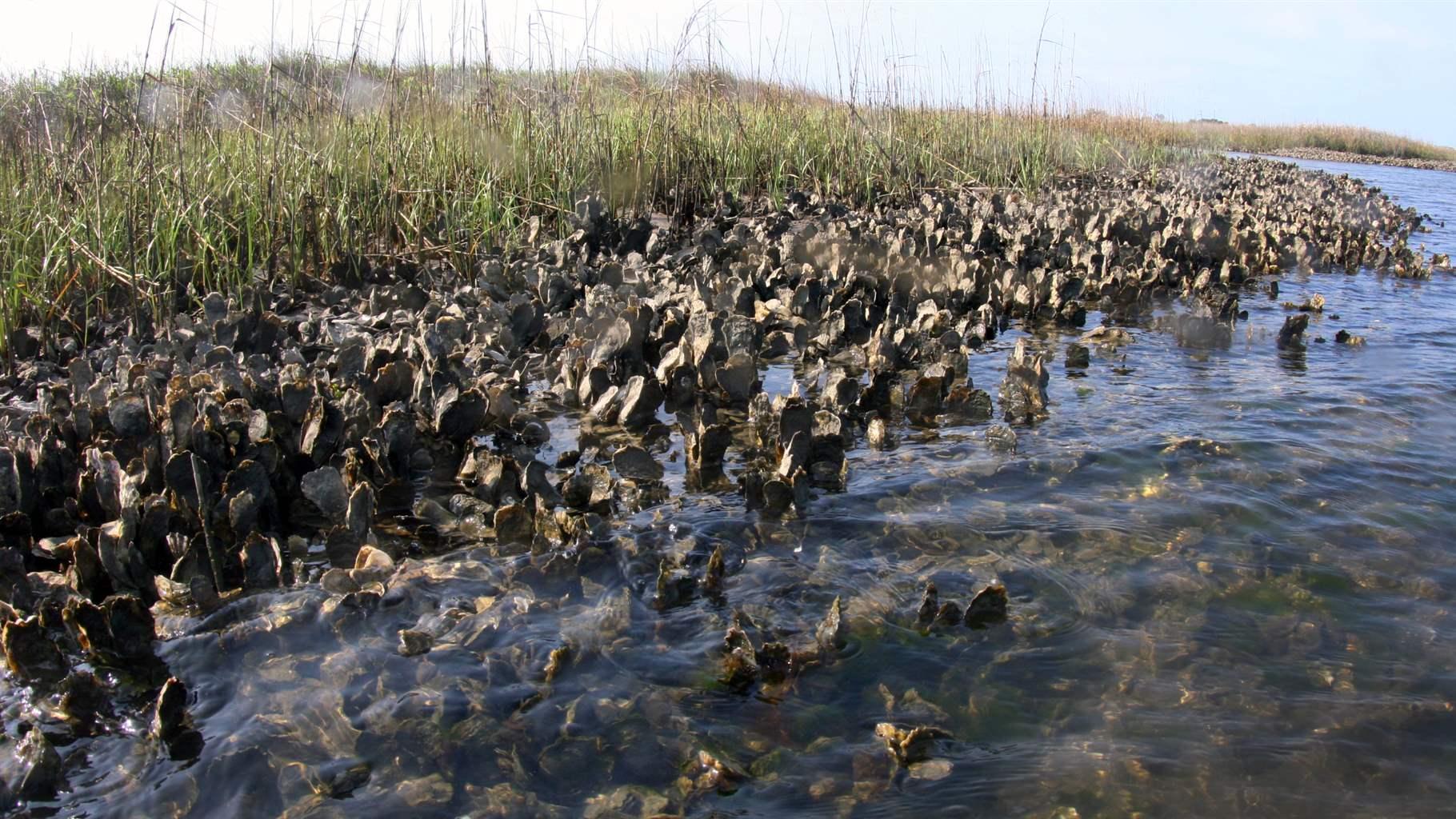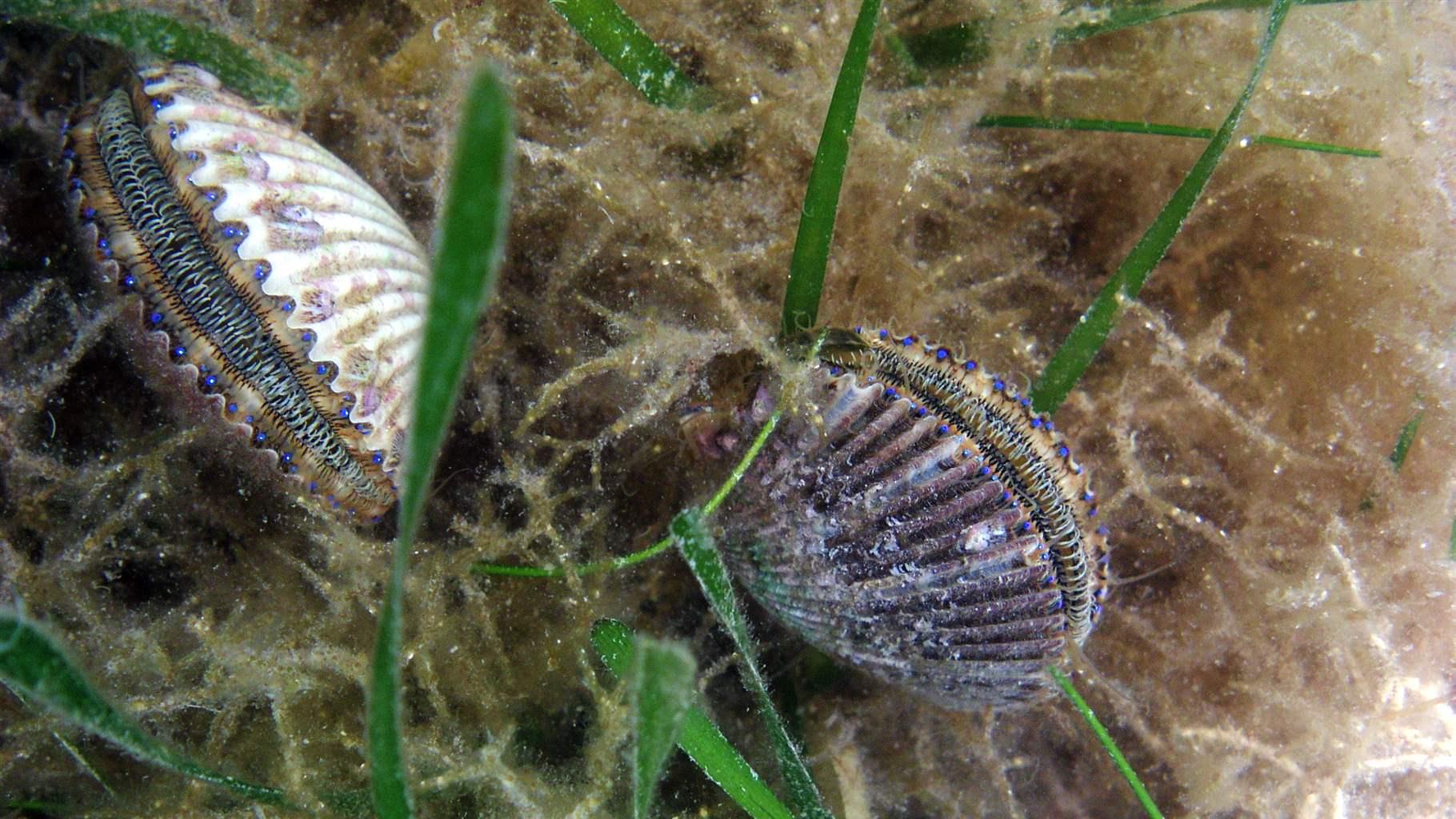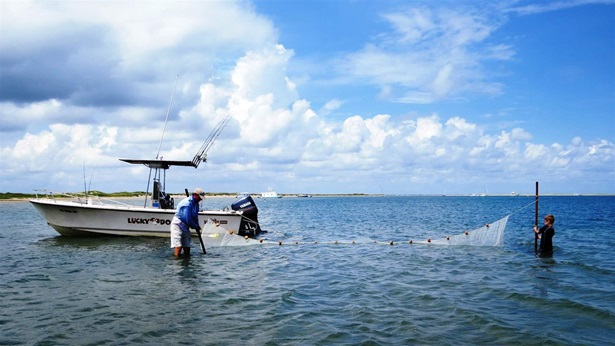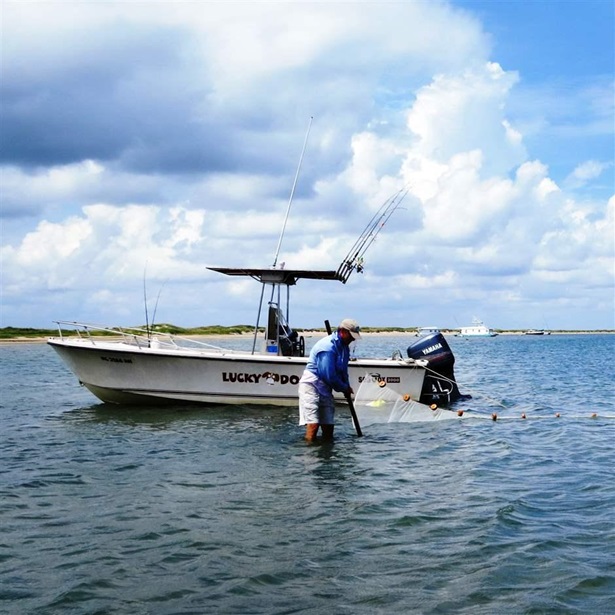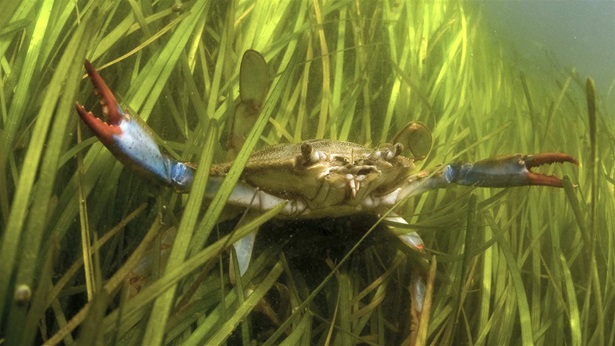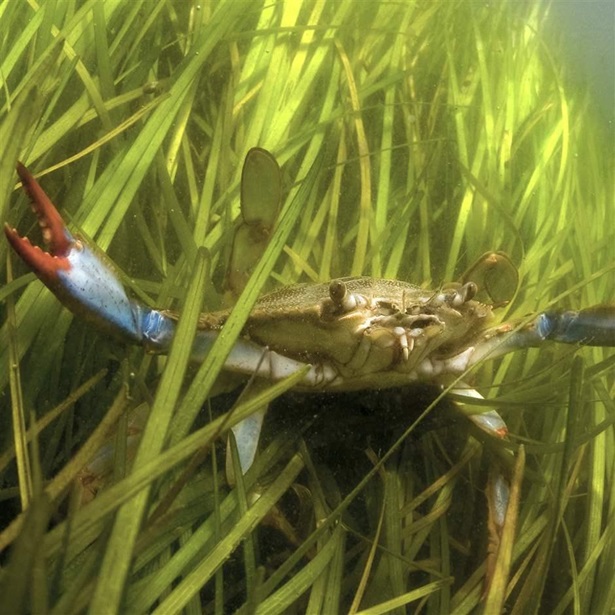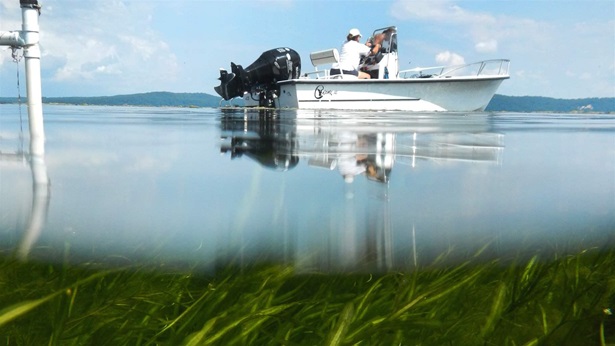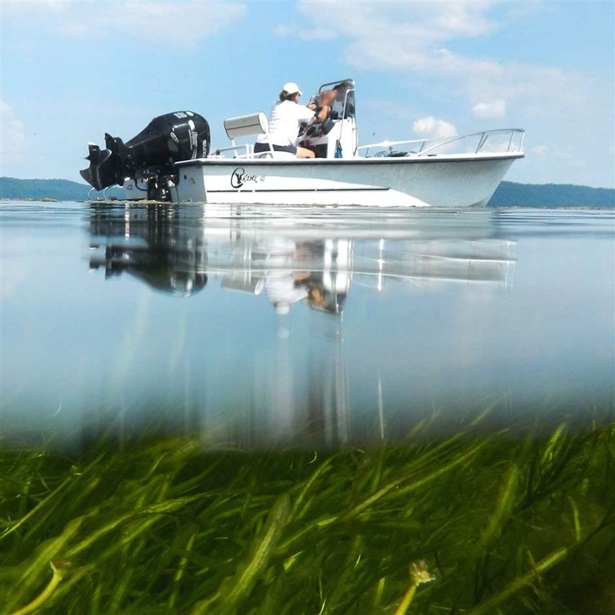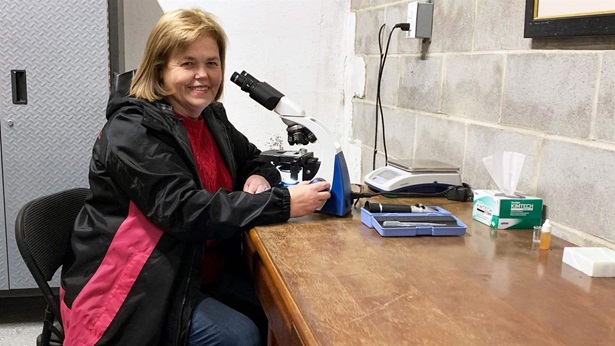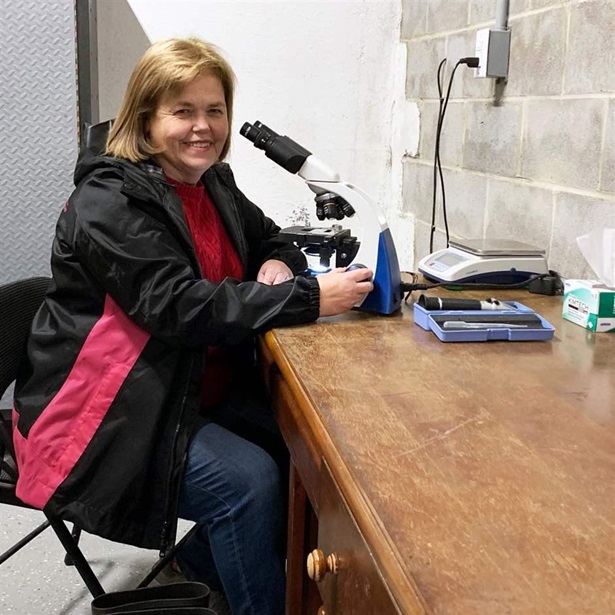Inside the Plan to Protect North Carolina’s Coastal Habitat
State agency leader discusses benefits of strong safeguards—and what comes next
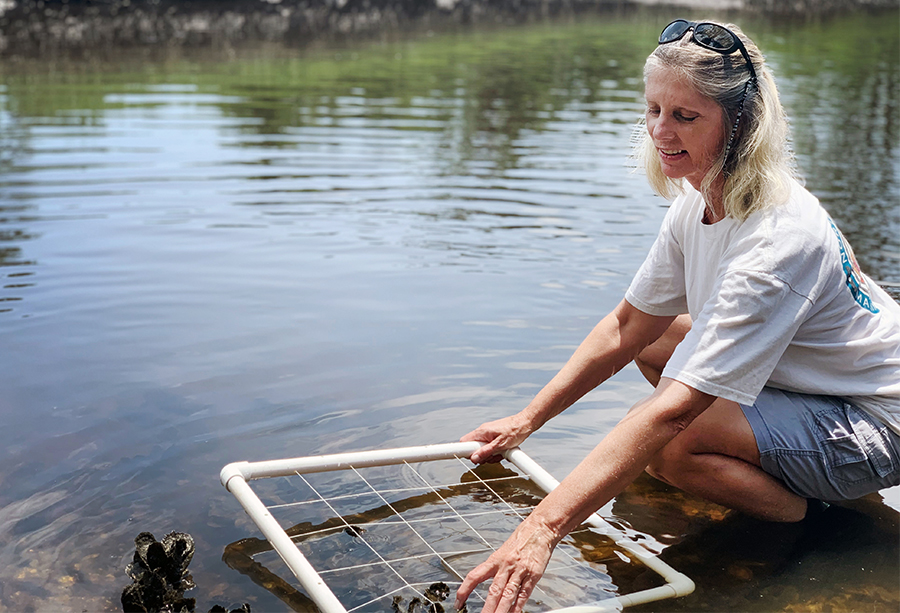
North Carolina’s bays and estuaries are ecologically rich environments that support a wide range of plants and animals, and attract millions of visitors who come to fish, hunt, and otherwise enjoy these extensive ecosystems. The state has long been a leader in effective coastal conservation and, as it does every five years, is updating its Coastal Habitat Protection Plan (CHPP), which state agencies use to guide their work. To learn more about the CHPP, The Pew Charitable Trusts, which is working with partners in the state to protect vital coastal habitats, spoke with Anne Deaton, a supervisor in the Habitat and Enhancement section of the North Carolina Division of Marine Fisheries.
This interview has been edited for clarity and length.
Q: What drew you to work on coastal and marine issues?
A: I always knew I was happiest outside, near the water. In the small town I grew up in, we had a creek in our neighborhood that went to the lake, and that’s where you could find me and my friends most of the time. When my family moved to Raleigh, North Carolina, I fell in love with the coast. We went there all the time, and I’d go clamming with my dad. I knew I wanted to have a career doing what I loved.
Q: How did you become involved with the CHPP?
A: After getting a biology degree from UNC-Wilmington, I began working for the North Carolina Shellfish Sanitation Office as a shoreline surveyor, walking the shoreline and taking water samples; if they showed elevated bacteria, waters would have to be closed to shellfish harvest to protect human health. I felt like an environmental detective, searching for what caused that pollution, like failing septic tanks. I went to graduate school for marine science, and then took a job monitoring and protecting coastal habitats, like seagrass, in Florida’s state parks. Once we had children, my husband and I decided to move closer to home. So in 1999, I returned to North Carolina to work on the first CHPP and I’ve been working on it ever since; there’s always been more I wanted to get done. And my kids spent a lot of time outside. The beach is a magical place—they played together for hours there. When people have happy memories and experiences with nature, they become strong advocates for its protection.
Q: Why are North Carolina’s coastal habitats so important?
A: We have 320 miles of barrier islands here that create a large estuarine system that, with the ocean, supports six types of fish habitat: wetlands, shell bottom, submerged aquatic vegetation, ocean hard bottom, soft bottom, and the water column. Wetlands frame our estuary: They’re the first line of defense from storms and pollutants, stabilize sediment, and provide food and shelter for about 90% of all fishery species in North Carolina at some point in their lives. In fresher water, we have forested wetlands; closer to the coast, it’s salt marsh. Shell bottom—oyster reef—is another important habitat. Oysters filter water, and their reefs reduce shoreline erosion and provide refuge for small fish and invertebrates. Submerged aquatic vegetation, including seagrass, is found in shallow, clear water and does what trees on land do: takes carbon dioxide out of the water and releases oxygen. Seagrass stabilizes sediment and shelters a large number of organisms, like shrimp and crabs. All these habitats are interconnected—for example, wetlands trap runoff, increasing water clarity needed for seagrass, while oysters protect wetlands from erosion.
Q: What’s special about the CHPP?
A: It’s different from other efforts in our state because the law requires the regulatory commissions involved to work together to carry out the plan’s recommendations. Agencies cooperate to improve habitat, water quality, fisheries, and coastal resiliency, and different protection and restoration efforts can build on each other. One example is with submerged aquatic vegetation, which is also a key issue for the next CHPP. In Albemarle Sound, there used to be much more underwater grass, but degraded water quality has led to the decline of this habitat and an increase in algal blooms, some of them toxic. By finding ways to reduce runoff of nutrients and sediment, water clarity will improve, allowing the grass to recover, which is critical for fish habitat. At the same time, it will make the water safer for aquatic life and people, and improve conditions for the ecosystem overall. Also, when storms come, healthy and extensive seagrass meadows make the ecosystem more resilient and more likely to rebound faster.
Q: What’s happening with the CHPP now, and how can the public participate in the process?
A: We expect to have the draft complete in spring 2021—it’ll be available on the Division of Marine Fisheries website—and then we’ll want to get public input on it, and we’ll hold public meetings. We know from the past that people voiced support for the recommended actions and wanted to see habitat conditions improve, so we want the plan to have teeth; that kind of support can really help us carry out our work. And when the plan’s finalized and approved by the commissions, likely by the end of 2021, the public can still help—for instance, by notifying the state when they see a fish kill or possible wetland or dredging violation. Also, waterfront property owners can try installing a living shoreline instead of a bulkhead. Protecting coastal habitats is more than just making your voice heard at a meeting—it’s also about actions you take personally.
